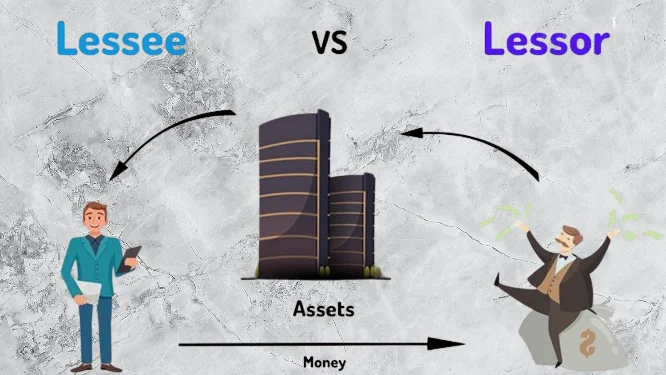Introduction to Lessor and Lessee
Navigating the world of rental agreements can be tricky. Whether you’re a new tenant or an experienced property owner, understanding the roles of lessee vs lessor is crucial for fostering a positive relationship. The terms may seem straightforward—lessee refers to the person renting, while lessor is the landlord or property owner—but there’s so much more involved in making this partnership thrive. A harmonious rental experience hinges not just on contracts, but also on communication, trust, and mutual respect. Let’s explore how both parties can contribute to a healthy rental dynamic that benefits everyone involved.
Importance of a Positive Rental Relationship
A positive rental relationship is crucial for both lessee vs lessor. It creates a foundation of trust that can significantly enhance the renting experience.
When both parties feel respected, it fosters open communication. This leads to better understanding and smoother transactions. Issues can be addressed before they escalate into major conflicts.
Moreover, a healthy relationship often results in longer tenancies. When tenants are satisfied, they are more likely to renew their leases rather than move elsewhere.
From the lessor’s perspective, maintaining good rapport with tenants can lead to fewer vacancies. For lessees, having an approachable landlord makes living situations much more enjoyable and stress-free.
Everyone benefits from a collaborative atmosphere where expectations are clear and mutual respect prevails.
Responsibilities of the Lessor
The lessee vs lessor, or the property owner, has a set of crucial responsibilities that ensure a smooth rental experience. First and foremost, they must maintain the property in good condition. This includes regular maintenance and addressing any repair requests from tenants.
Transparency is another key responsibility. lessee vs lessor should provide clear terms regarding rent payments, security deposits, and lease agreements. This helps avoid misunderstandings later on.
Lessor also needs to respect the privacy of their lessees. They should give proper notice before entering the rented space unless it’s an emergency situation.
Effective communication plays a significant role in building trust. A responsive lessor who addresses concerns promptly fosters a positive relationship with their lessee. By fulfilling these duties diligently, lessors create an environment where both parties can thrive peacefully together.
Responsibilities of the Lessee
The lessee, often referred to as the tenant, carries specific responsibilities that are essential for a healthy rental experience. One primary duty is ensuring timely payment of rent. Consistency in payments fosters trust and prevents potential disputes.
Additionally, lessees should maintain the property in good condition. This includes regular cleaning and reporting any damages or needed repairs promptly to the lessor. Taking care of minor issues can prevent bigger problems down the line.
Another responsibility involves adhering to lease terms. Understanding what’s allowed and what isn’t—like pet policies or subletting rules—is crucial for avoiding misunderstandings.
Open communication with the lessor is vital. Whether it’s about maintenance concerns or questions regarding lease clauses, keeping an ongoing dialogue can strengthen the relationship significantly. Engaging positively sets a tone of cooperation throughout their rental period.
Communication is Key: Tips for Effective Communication Between Lessor and Lessee
Clear communication is essential for a successful rental relationship. Both lessors and lessees should establish open lines of dialogue from the start.
Regular check-ins can help address concerns before they escalate. Schedule occasional meetings or phone calls to touch base on any issues that arise during the lease period.
Use multiple channels for communication, such as emails, texts, or face-to-face conversations. This flexibility allows both parties to choose what feels most comfortable.
Active listening plays a crucial role too. Each party should feel heard and understood when discussing their needs and expectations.
Document important discussions in writing to avoid misunderstandings later on. A simple follow-up email can clarify agreements made verbally.
Maintain a respectful tone throughout all interactions. Politeness fosters goodwill and encourages cooperation between both sides.
Handling Disputes and Negotiating Solutions
Disputes can arise in any rental relationship, but how they are handled makes all the difference. Both lessors and lessees should approach conflicts with a calm mindset. It’s essential to remain objective and focus on the issue rather than personal feelings.
When a disagreement occurs, open dialogue is crucial. Each party should express their concerns clearly while actively listening to the other side’s perspective. This creates an environment where solutions are more likely to be found.
Negotiation often requires compromise. A flexible attitude can lead to creative solutions that satisfy both parties’ needs. Whether it’s payment plans for overdue rent or repairs needed in the property, finding common ground fosters goodwill.
Documenting agreements ensures that both sides understand expectations moving forward. Clear records can prevent misunderstandings down the road and support a smoother rental experience overall.
Building Trust and Respect in the Rental Relationship
Building trust in a rental relationship is essential for both the lessee and lessor. It starts with transparency. Sharing information openly can prevent misunderstandings down the line.
Respect goes hand in hand with trust. Each party must acknowledge the other’s rights and needs. This creates an atmosphere where concerns can be voiced without fear of backlash.
Consistency plays a crucial role too. When commitments are met, it establishes reliability that both parties will appreciate over time.
Moreover, small gestures matter. A simple thank you or recognition of timely rent payments fosters goodwill.
Regular check-ins can also enhance respect and understanding between lessee and lessor, ensuring everyone feels heard and valued throughout their rental journey.
Conclusion
Building a positive rental relationship is essential for both lessors and lessees. Understanding the distinct roles each party plays helps foster respect and trust, which are vital elements of any successful agreement. By being aware of responsibilities, maintaining open lines of communication, and addressing disputes with a willingness to negotiate, both parties can create an environment that encourages cooperation.
When lessors and lessees work together harmoniously, they not only enhance their individual experiences but also contribute positively to the rental community as a whole. A strong partnership leads to smoother transactions and more fulfilling living arrangements. Embracing this collaborative spirit transforms what could be just a business arrangement into a mutually beneficial relationship built on understanding and shared goals.
FAQs
What is “Lessee vs. Lessor”?
“Lessee vs. Lessor” refers to the relationship between the tenant (lessee) and the property owner (lessor) in a rental agreement. The lessee is the individual renting the property, while the lessor is the landlord or property owner providing the rental space. Understanding each party’s roles and responsibilities is crucial for a smooth and positive rental experience.
What are the key responsibilities of a lessor?
A lessor must maintain the property, provide clear lease terms, respect the lessee’s privacy, and communicate effectively. These responsibilities ensure that the rental experience is smooth and that any issues are addressed promptly.
What should a lessee do to maintain a positive relationship with the lessor?
A lessee should pay rent on time, maintain the property, adhere to lease terms, and communicate openly with the lessor. By fulfilling these responsibilities, the lessee helps create a cooperative and respectful rental environment.
How can lessors and lessees effectively communicate?
Effective communication can be achieved through regular check-ins, using multiple communication channels, active listening, and documenting important discussions. This approach helps address issues before they escalate and ensures that both parties feel heard and understood.
What is the best way to handle disputes between lessee and lessor?
Disputes should be handled calmly and objectively, with open dialogue and active listening from both sides. Compromise and flexibility are key to finding solutions that satisfy both parties. Documenting agreements can help avoid misunderstandings and support a smoother resolution process.

